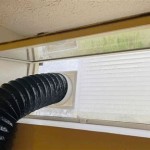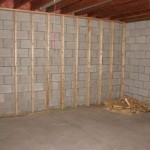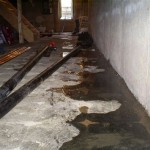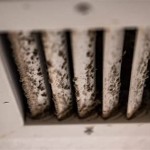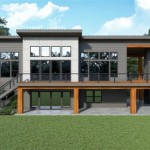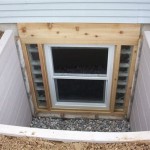Can You Put Engineered Hardwood in a Basement? A Comprehensive Guide
The question of whether engineered hardwood flooring can be installed in a basement is a common one for homeowners considering basement renovations or upgrades. Basements, by their nature, present unique challenges compared to above-ground living spaces, primarily related to moisture and temperature fluctuations. Understanding the properties of engineered hardwood and the specific conditions of a basement environment is crucial to making an informed decision about flooring options.
Unlike solid hardwood flooring, engineered hardwood is constructed with multiple layers. The top layer is a veneer of real hardwood, providing the aesthetic appeal of solid wood. Beneath this veneer are layers of plywood or high-density fiberboard (HDF), which are bonded together. This layered construction imparts greater dimensional stability compared to solid hardwood. In theory, this inherent stability makes engineered hardwood a more suitable candidate for basement installation than solid hardwood. However, careful consideration of several factors is still paramount.
Understanding the Challenges of Basement Environments
Basements are often characterized by higher levels of moisture compared to other parts of a house. This moisture can originate from several sources: groundwater seeping through the foundation, condensation due to temperature differences between the concrete floor and the air, and humidity levels in the surrounding environment. Excess moisture can lead to a range of problems, including mold growth, wood warping, and adhesive failure. The presence of moisture is arguably the most significant obstacle to any flooring installation in a basement, and engineered hardwood is not immune to its effects, although it is generally more resilient than its solid wood counterpart.
Temperature fluctuations are another frequent issue in basements. Basements are often cooler than the rest of the house, especially during the colder months. Temperature changes can cause expansion and contraction in flooring materials, which can lead to gaps and other problems over time. Consistent and extreme temperature swings can weaken the adhesives used in engineered hardwood construction and impact the longevity of the installation overall.
The concrete slab that forms the basement floor is a critical element to consider. Concrete is porous and can absorb moisture from the ground. This moisture can then migrate to the surface of the slab, potentially affecting the flooring installed above it. Testing the concrete slab for moisture content is a crucial step before installing any type of flooring in a basement. A high moisture content can negate the benefits of engineered hardwood's dimensional stability.
Factors Favoring Engineered Hardwood in Basements
Despite these challenges, engineered hardwood can be successfully installed in basements if certain precautions are taken and the environment is properly prepared. Its multi-layered construction offers advantages over solid hardwood in terms of moisture resistance and stability. The cross-ply construction of the core layers helps prevent warping and buckling that can occur with solid hardwood when subjected to moisture.
The method of installation plays a significant role in the success of an engineered hardwood floor in a basement. Floating floors are generally recommended for basement installations. In a floating floor installation, the planks are glued or clicked together at the edges, creating a single, interconnected surface that is not directly attached to the concrete slab. This allows the floor to expand and contract as a single unit, minimizing stress on individual planks. The floating method also reduces the risk of moisture migrating from the concrete slab directly into the flooring. The use of a vapor barrier underlayment is essential in this type of installation as well.
The performance of the engineered hardwood itself significantly influences its suitability for basement applications. Engineered hardwood with a thicker wear layer of real hardwood provides better protection against scratches and dents. The core material also matters: plywood cores are generally more moisture-resistant than HDF cores. Selecting engineered hardwood specifically designed for basement environments, which often incorporate enhanced moisture resistance features, can be a worthwhile investment.
Essential Preparations for a Successful Installation
Prior to installing engineered hardwood in a basement, a thorough assessment of the basement environment is required. This assessment should include a moisture test of the concrete slab. Calcium chloride tests and electronic moisture meters are common methods for determining the moisture content of concrete. If the moisture levels are above the recommended limits, remediation measures are necessary. These measures may include installing a vapor barrier beneath the slab or applying a waterproof sealant to the concrete surface. It is important to address any existing moisture problems before starting the flooring installation.
Proper ventilation is crucial in minimizing moisture buildup in a basement. Ensuring adequate airflow can help prevent condensation and reduce overall humidity levels. Dehumidifiers can also be used to control humidity in basements, particularly during periods of high humidity. Improving insulation in the basement walls and ceiling can further help regulate temperature and reduce condensation. A well-ventilated and insulated basement will create a more stable environment for engineered hardwood flooring.
The installation process itself should be performed according to the manufacturer's instructions. Following these guidelines ensures that the flooring is properly installed and that the warranty remains valid. Acclimation is a critical step: allowing the engineered hardwood to acclimate to the basement environment for several days before installation enables the material to adjust to the temperature and humidity levels, reducing the likelihood of expansion or contraction issues after installation. Using the correct adhesive, if required by the installation method, is also crucial for ensuring a secure and long-lasting bond between the planks.
Choosing the right type and quality of engineered hardwood contributes significantly to the project's success. Not all engineered hardwood is created equal. Some brands offer enhanced moisture resistance and thicker wear layers, specifically designed for challenging environments like basements. Investing in a higher quality product can provide greater peace of mind and extend the life of the flooring.
Mitigating Potential Problems After Installation
Even with careful preparation and installation, ongoing maintenance is essential for preserving the integrity of engineered hardwood flooring in a basement. Regular cleaning with a damp mop and appropriate cleaning solutions can help prevent dirt and grime from accumulating and damaging the finish. It is crucial to avoid using excessive water when cleaning, as it can seep into the seams and cause damage. Addressing spills promptly can prevent staining and water damage.
Monitoring humidity levels in the basement is an ongoing task. Maintaining a consistent humidity level between 30% and 50% helps prevent excessive expansion or contraction of the flooring. Using a dehumidifier during humid months and a humidifier during dry months can help maintain the desired humidity range.
Regular inspections of the flooring can help identify potential problems early. Look for signs of warping, buckling, or gaps between planks. Addressing these issues promptly can prevent them from escalating into more serious problems. Repairing any leaks or water damage quickly is essential to prevent moisture from affecting the flooring.
Area rugs can be used strategically to protect high-traffic areas and prevent scratches and dents. Placing rugs near entrances can help trap dirt and moisture before it reaches the flooring. Using furniture pads under heavy furniture can prevent indentations and scratches.
In summary, while engineered hardwood can be successfully installed in basements, a meticulous approach to preparation, installation, and maintenance is crucial. Understanding the specific challenges of basement environments and taking necessary precautions can help ensure a long-lasting and aesthetically pleasing flooring solution. Proper moisture mitigation, adequate ventilation, and careful selection of materials are the cornerstones of a successful basement flooring project.

Using Engineered Wood Flooring In Basements Mansion Hill Custom Floors

The Best Wood Flooring For Basements Carlisle Wide Plank Floors

Where To Get Cheap Flooring For Basements Reallycheapfloors America S Cheapest Hardwood

Do Hardwood Floors Make Sense In A Basement Dave S Floor Sanding

Invision Hardwood Blog Best Flooring For Basements

Basement Wood Flooring What You Should Know

The Best Wood Flooring For Basements Carlisle Wide Plank Floors

Installing Engineered Hardwood On Concrete Twenty Oak

What Is The Best Flooring For Basements Get Pros And Cons

The Best Flooring For Basement Renovations Guide Reallycheapfloors America S Cheapest Hardwood
Related Posts

